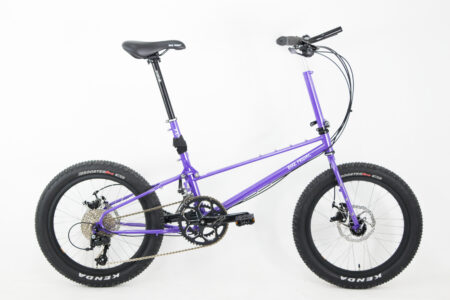Spring/ Summer Tune-up Checklist:
- Dust off the dirt – Clean away dirt and grease of the past.
- Rust free is the goal – Check for visible signs of rust, especially on brake cables and chain – rusted brake cables should be replaced.
- Lube it up – Clean your chain by brushing it with a de-greasing solvent, apply a chain lubricant and spin your chain through a rag to distribute the lubricant across all surfaces.
- Drive Train– Check for worn teeth on the chainrings, cassette, and rear derailleur. Attempt to move the cranks side-to-side. There should be no lateral movement.
- Check headset – Ensure your headset bearing preload is adjusted correctly. Riding on a loose headset is unsafe and can cause damage to your frame. Check out https://bikefriday.com/wp-content/uploads/2023/01/Save-These-Instructions-Standard.pdf for more details.
- Review nuts & bolts – Check that all nuts and bolts are tight and rust-free – apply some grease to slightly rusted areas. If your bike has a folding rear end make sure the pivot bolt is tight, a loose pivot bolt can lead to damage to your rear end.
- Check your fork – Make sure your fork is properly seated and well-secured onto your front wheel axis (where it connects to your wheel).
- Quick releases tight? – Check all quick releases for signs of loosening.
- Rims solid and ready? – Check rims for wobbles, hops, and cracks in the eyelets, and feel for any loose spokes. Hold each wheel by the rim and attempt to move them side-to-side (perpendicular to the direction of rotation) to check for loose hubs. There should be no lateral play in the hubs.
- Pump up tires – Inflate your tires to the recommended tire pressure. Check tires for small tears or embedded glass, replace tires and tubes as needed. If you’re running tubeless tires, now is a great time to add fresh sealant. Sealant dries out over time.
- Still solid brakes? – If your bike uses cable-actuated brakes, make sure the brake cable is properly secured, unfrayed, and moves smoothly. Replace the brake pads if worn. Once installed, or if your current pads have plenty of life left, spin the wheels to confirm the brake rotor (or rim in the case of rim brakes) is not rubbing against the brake pads. Tighten loosening brake cables and caliper brakes, or adjust squeaky disc brakes.
- Light and visibility– Replace worn out batteries in your bike lights, recharge rechargeable lights or check that wires are connected properly. Ensure reflectors are attached and secure.
- Testride the shifting – Take a short trip around the block, shift through the gears and take note of any skipping or jumping between gears. This skipping could be due to a frayed cable or simply cable tension. Check for skipping (a sign of worn down teeth on your chainrings or cog, a malfunctioning derailleur or a problem with your internal gears).
- Mysteries to be fixed by professionals – When in doubt, take your bike to Bike Friday or your local bike shop for a full tune-up.
**Check out Park Tool’s YouTube for simple, handy, step by step service “how to” videos that can walk you through each process. https://www.youtube.com/c/parktool
E-ASSIST Checklist:
- Stay charged: Check your battery levels and then give it a full charge. If your battery is unable to hold a proper charge, it may be due to improper battery storage. There is never a reason to open your lithium-ion battery. Don’t examine them or try to repair them. See Bike Friday’s E-Assist manual for additional battery maintenance information. https://bikefriday.com/wp-content/uploads/2023/01/2022-2023-UPDATED-Getting-Started-Guide-BF-Hub-Motors.pdf
- Safety – Always use the proper changer provided with your battery. Using chargers that are not specifically designed for the proper wattage and amperage can be dangerous and cause damage.
- Avoid overcharging your battery – This can happen if you leave your battery plugged in for too long. Overcharging can damage the battery cells and shorten the overall life of the battery.
- Connector health – Inspect the battery terminals/ connectors for any signs of rust or corrosion. This may look like green dust or film. Check all wires for frays or exposure. Ensure all wires and cables are properly connected and tight. (Controller, Battery, Motor, Speed Sensor)
By following these simple tips, you can help keep your battery safe and avoid any potential dangers or pitfalls while enjoying your ride to its fullest potential.
Bike Friday
Average rating: 0 reviews







